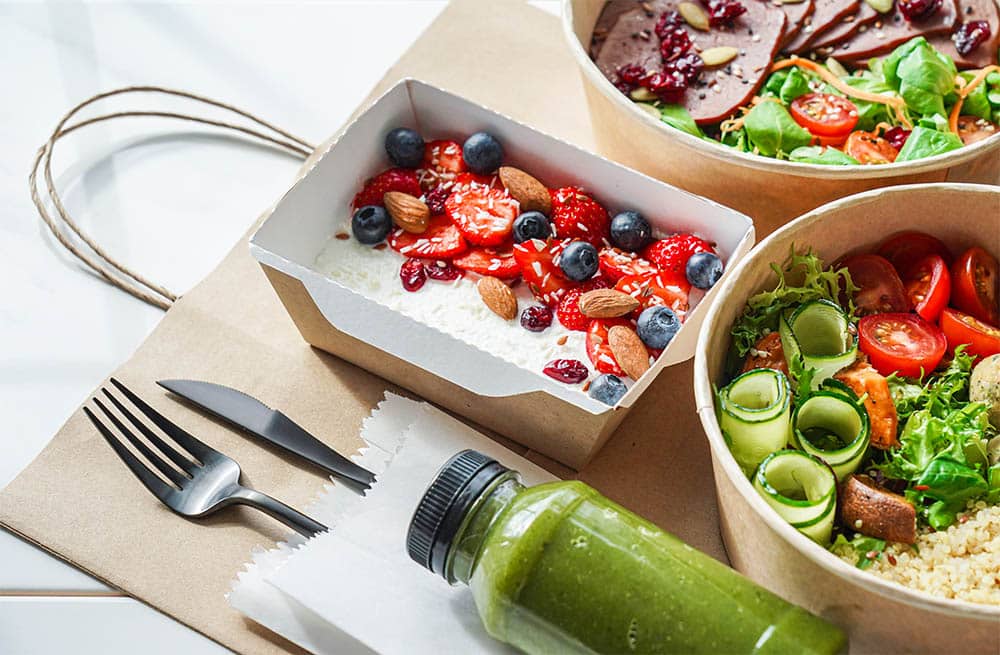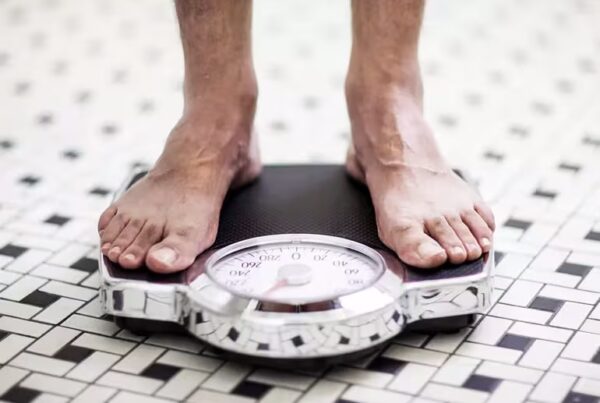Meal planning for weight loss is an essential element in attaining any diet-related objectives, and its importance should not be underestimated. A well-constructed program not only aids in making healthier dietary selections but also hinders overindulging and reduces the costs on groceries. In this comprehensive guide, we will explore the fundamentals of meal planning and how it can be tailored to individual dietary needs for successful weight loss.
We will explore ways to personalize your meal plans based on dietary needs such as plant-based diets and protein intake considerations. Additionally, we’ll discuss combining exercise routines with healthy eating habits to create a balanced approach to losing weight effectively.
Furthermore, our 30-day meal plan example for weight loss demonstrates the benefits of seasonal produce and shorter ingredient list recipes. We’ll also share weekly meal planning strategies that include creating a weekly plan and stocking pantry essentials for success in your journey.
Table of Contents:
- The Importance of Meal Planning for Weight Loss
- Gaining Control Over Diet Through Planned Meals
- Saving Money by Avoiding Impulse Purchases
- Personalizing Your Meal Plan
- Incorporating Exercise into Your Weight Loss Journey
- 30-Day Meal Plan Example for Weight Loss Success
- Weekly Planning & Shopping Lists
- Meal Prepping for Long-term Weight Management
- FAQs in Relation to Meal Planning for Weight Loss
The Importance of Meal Planning for Weight Loss
Meal planning is an essential step in achieving weight loss goals as it promotes healthier food choices, prevents overeating, and reduces stress associated with hunger and last-minute meal decisions. It also helps save money at the grocery store and minimize food waste. By taking control of your diet through planned meals, you can make more informed decisions about what goes into your body.
Gaining Control Over Diet Through Planned Meals
Planning meals ahead allows you to choose healthy foods that align with your dietary approaches and avoid temptations that may arise from impulsive eating habits. Creating a meal plan can help ensure that nutrient-rich foods are accessible when hunger strikes, helping you stay on track with your diet without feeling deprived or turning to unhealthy choices.
Saving Money by Avoiding Impulse Purchases
- Create a grocery list: Before heading out for grocery shopping, prepare a detailed list based on your meal plan. This will help you stay focused on purchasing only the items needed for your planned meals.
- Avoid processed snacks: Plan snacks ahead by including nutritious options like fruits or nuts instead of reaching for high-calorie processed treats loaded with saturated fat.
- Bulk buying: Buying staple items such as brown rice or canned beans in bulk can lead to significant savings while ensuring access even when fresh produce isn’t readily available.
Incorporating these strategies into your daily routine will not only contribute positively towards weight loss but also improve overall health outcomes by promoting better nutrition intake throughout the day.
Personalizing Your Meal Plan
Formulating a personalized eating regimen is essential for accomplishing your weight reduction objectives, as it considers singular dietary necessities and inclinations. Whether you follow a Mediterranean diet, vegetarian or vegan diets, or have specific nutrient requirements, tailoring your plan to suit your lifestyle will make it easier to stick to and enjoy.
Ensuring Adequate Protein Intake for Plant-Based Dieters
If you’re following a plant-based diet, ensuring adequate protein intake can be challenging but not impossible. Incorporate various sources of plant proteins like legumes, tofu, tempeh, seitan, whole grains such as brown rice and quinoa, nuts, and seeds in your meals. These foods are not only rich in protein but also provide essential nutrients like fiber and healthy fats that support weight loss.
Consulting Healthcare Providers for Special Cases
In certain situations like pregnancy or breastfeeding, counting calories or embarking on restrictive diets may not be appropriate without proper guidance from healthcare professionals. It’s important to consult with a registered dietitian or other qualified experts before making significant changes to ensure the safety of both mother and child while still working towards personal health goals.
Note: The information provided here should not replace professional medical advice. Always consult with your healthcare provider before starting any new dietary approaches.
Incorporating Exercise into Your Weight Loss Journey
Combining an active lifestyle with balanced nutrition allows individuals to maintain moderate body weights more effectively. Including exercise routines alongside healthy eating habits can further support weight loss goals while maintaining overall well-being.
Benefits of Combining Physical Activity with Proper Nutrition
Maintaining a consistent exercise routine and following a healthy diet work hand-in-hand in promoting successful weight loss. Engaging in consistent physical activity can help to burn calories, boost metabolism, and enhance cardiovascular health. When combined with nutrient-dense foods like fruits, vegetables, lean proteins, and whole grains, it becomes easier for the body to shed excess pounds and maintain muscle mass.
Examples of Exercises that Complement Meal Planning Efforts
- Aerobic exercises: Activities such as brisk walking, jogging or swimming help boost heart rate and burn calories efficiently.
- Strength training: Incorporate resistance exercises like lifting weights or performing bodyweight movements (e.g., push-ups) at least twice per week to build muscle mass which supports long-term weight management.
- Flexibility workouts: Stretching exercises like yoga promote flexibility and balance while reducing stress levels a€” making it easier to stick to your meal plan without succumbing to emotional eating triggers.
- Circuit training: High-intensity interval training (HIIT) sessions combine cardio workouts with strength moves for optimal calorie burning within short timeframes; perfect for those on tight schedules who still want effective results from their fitness efforts.
To maximize the benefits of combining exercise with meal planning, consider consulting a registered dietitian or personal trainer who can provide personalized guidance and support tailored to your unique needs.
30-Day Meal Plan Example for Weight Loss Success
A 30-day meal plan can be a great way to kickstart your weight loss journey. By simplifying the routine and focusing on seasonal produce, you’ll enjoy delicious meals while working towards your goals. The key is to consume approximately 1,500 calories per day, which has been shown to promote weight loss without leaving you feeling deprived.
Seasonal Produce Utilization in Your Daily Meals
By incorporating seasonal produce into your meals, you can enjoy the benefits of nutrient-rich foods while also experimenting with new recipes and keeping things interesting. This approach helps keep things interesting and allows you to experiment with new recipes featuring fresh ingredients like tomatoes, zucchini, or peaches during the summer months.
Achieving Calorie Targets Without Compromising Taste
- Mediterranean Diet: Emphasizing whole grains, lean proteins such as fish or chicken breast, and healthy fats from olive oil or nuts; this diet is known for its heart-healthy benefits and can help with weight loss.
- Vegan Diets: Focusing on plant-based foods like legumes, whole grains (e.g., brown rice), fruits & vegetables, and vegan diets have been linked to lower body mass index (BMI) values.
- Variety: Mixing up your meals by trying new recipes and incorporating different ingredients can help you stay motivated and satisfied while sticking to your calorie goals.
Remember, the key to a successful meal plan is planning ahead. Creating a grocery list, prepping snacks, and exploring nutrient-dense foods like those found in Mediterranean or vegan diets can be helpful for reaching weight loss goals.
Weekly Planning & Shopping Lists
One of the most effective ways to maintain a healthy diet and lose weight is by dedicating time at the beginning of each week to plan meals. By having a well-thought-out strategy, you can stay away from unplanned buys and guarantee that your kitchen is supplied with nourishing sustenances. By having a clear plan, you can avoid impulse purchases and ensure that your kitchen is stocked with nutrient-dense foods.
Benefits of Weekly Meal Planning
- Grocery list organization: A well-organized grocery list ensures that you buy everything needed for your planned meals, minimizing last-minute trips to the store or unhealthy takeout options.
- Better portion control: When planning ahead, it’s easier to manage portion sizes and prevent overeating – an essential aspect of successful weight loss efforts.
- Nutrient-rich meals: With meal planning, individuals are more likely to incorporate a variety of vegetables a€” like leafy greens or colorful peppers a€” into their dishes, leading to balanced nutrition throughout the week.
Pantry Staples for Healthy Eating
In addition to fresh produce and lean proteins from your weekly shopping trip, it’s important always have certain staples in your pantry. These items can be used as building blocks for quick yet nutritious recipes when fresh ingredients aren’t readily available. Some examples include:
- Canned beans (e.g., black beans or chickpeas)
- Dried whole grains (e.g., brown rice or quinoa)
- Herbs and spices (e.g., basil or cumin) Nuts and seeds (e.g., almonds or chia seeds)
By stocking your kitchen with herbs, spices, nuts, and seeds you’ll be able to more easily maintain a healthy diet and reach weight loss goals in the long term.
Meal Prepping for Long-term Weight Management
Meal prepping plays a significant role in successful long-term weight management efforts. By pre-making dishes, you can cut down on both effort and time during hectic work weeks while making sure your meals are healthy and support your weight loss objectives.
Time-saving benefits of meal prepping
By devoting a bit of time to plan out and make meals in advance, you can prevent hasty decisions that usually result in unhealthy eating. With ready-to-eat options available, it’s easier to resist temptation from high-calorie snacks or fast food. Moreover, having prepared meals on hand reduces stress associated with hunger pangs and helps maintain portion control.
Examples of easy-to-prep recipes
- Greek Muffin-Tin Omelets: These protein-packed omelets are perfect for breakfast or lunch on the go. Customize them by adding different vegetables a€” such as spinach or tomatoes a€” based on your preferences.
- Brussels Sprouts Salad: This nutrient-dense salad is full of fiber-rich ingredients like Brussels sprouts, apples, almonds, and dried cranberries. It makes an excellent side dish or light lunch option when paired with lean protein sources like grilled chicken breast.
- Stuffed peppers filled with quinoa, black beans, and corn make a protein-packed vegetarian meal that can be prepped in advance. Preparing the peppers ahead of time can help you stay on track with your weight loss goals by providing healthy, delicious meals throughout the week.
Adopting meal prepping into your weight-loss plan can give you the power to maintain a nutritious diet while delighting in delightful, healthy dishes on an ongoing basis.
FAQs in Relation to Meal Planning for Weight Loss
How Does Meal Planning Help with Weight Loss?
Meal planning helps with weight loss by promoting healthier food choices, controlling portion sizes, and reducing the likelihood of overeating. By creating a plan in advance, you can ensure balanced meals that align with your nutritional goals and avoid impulsive decisions driven by hunger or convenience.
What Is the Most Effective Meal Schedule for Weight Loss?
The most effective meal schedule for weight loss varies among individuals but typically includes three main meals (breakfast, lunch, dinner) and one to two healthy snacks. Spacing out meals every 4-5 hours helps maintain stable blood sugar levels and prevents excessive hunger leading to overeating. Studies show that consistency in meal timing may also play a role in successful weight management.
How Do I Create a Meal Plan to Lose Weight?
To create a meal plan for losing weight:
- Determine your daily calorie needs based on age, gender, and activity level.
- Choose nutrient-dense foods from all food groups.
- Plan balanced meals incorporating lean proteins, whole grains, fruits/vegetables, and healthy fats.
- Control portion sizes using measuring tools or visual cues.
- Incorporate variety and flexibility within weekly plans.
- Use sample plans, recipes, and apps as guidance.
Conclusion
Optimizing your diet through smarter food choices, avoiding overindulgence and reducing grocery costs can give you the power to regulate what you eat and boost your health. Personalizing your plan based on dietary needs such as plant-based diets or protein intake considerations can help you stay on track.
Combining exercise routines with healthy eating habits has numerous benefits that go beyond just weight loss. Creating a 30-day meal plan example for weight loss using seasonal produce and shorter ingredient list recipes can make meal planning easier. Weekly meal planning strategies like creating a weekly meal plan and stocking pantry essentials along with time-saving meal prep ideas and healthy make-ahead recipes are also important tools in sustaining long-term success.
If you’re looking to start or continue your journey towards better health through effective meal planning for weight loss, check out our blog at Vitality Weight Loss Institute. At Vitality Weight Loss Institute, our team of experts is dedicated to providing you with the resources and guidance needed for successful meal planning and weight loss.




